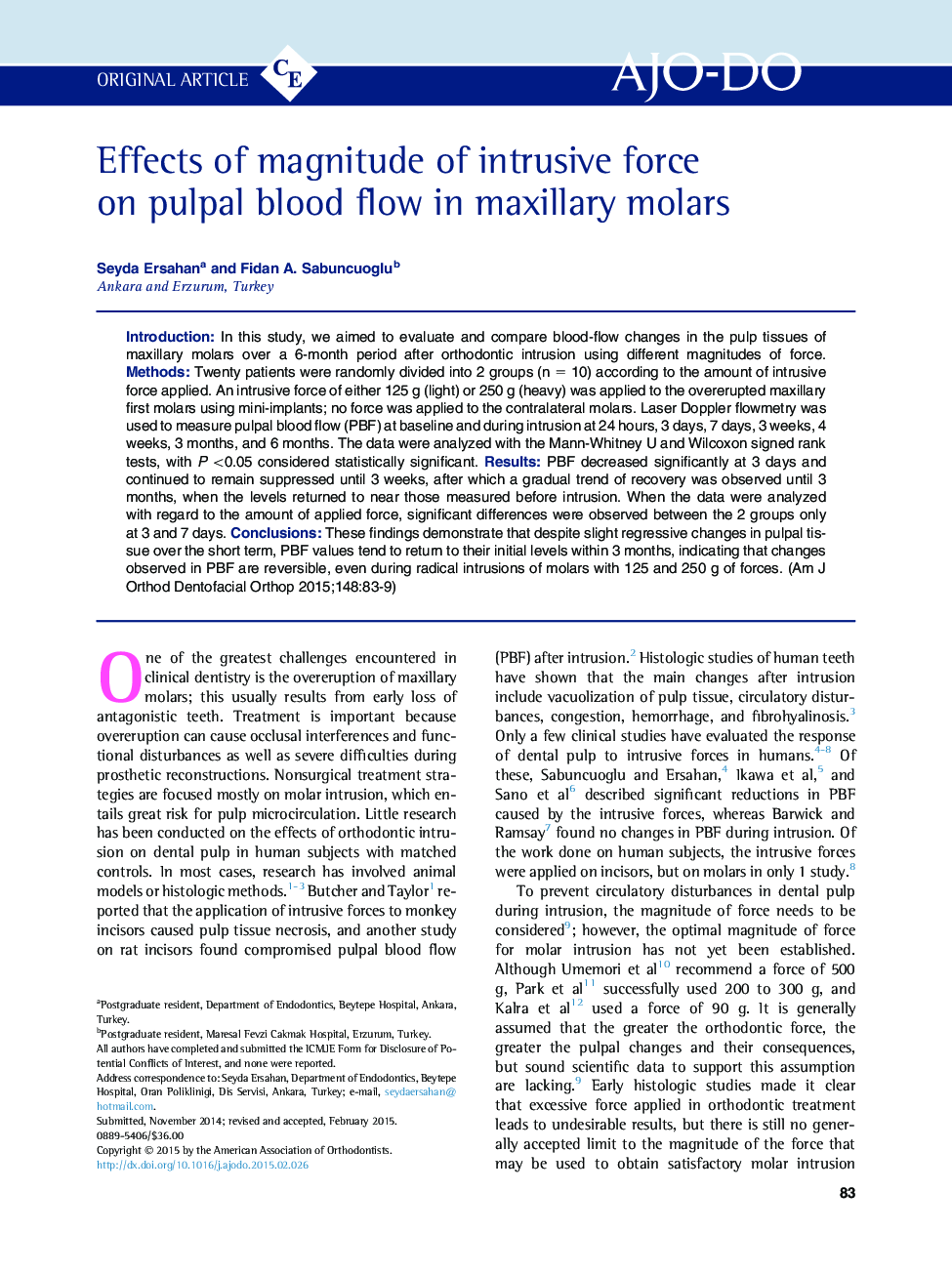| Article ID | Journal | Published Year | Pages | File Type |
|---|---|---|---|---|
| 3115338 | American Journal of Orthodontics and Dentofacial Orthopedics | 2015 | 7 Pages |
•Pupal blood flow of maxillary first molars was measured with a laser Doppler flowmeter.•Previous studies were conducted on incisors.•Pupal blood flow is reduced during the early stages of intrusion with light or heavy forces.•Pupal blood flow values returned to baseline after 3 months.
IntroductionIn this study, we aimed to evaluate and compare blood-flow changes in the pulp tissues of maxillary molars over a 6-month period after orthodontic intrusion using different magnitudes of force.MethodsTwenty patients were randomly divided into 2 groups (n = 10) according to the amount of intrusive force applied. An intrusive force of either 125 g (light) or 250 g (heavy) was applied to the overerupted maxillary first molars using mini-implants; no force was applied to the contralateral molars. Laser Doppler flowmetry was used to measure pulpal blood flow (PBF) at baseline and during intrusion at 24 hours, 3 days, 7 days, 3 weeks, 4 weeks, 3 months, and 6 months. The data were analyzed with the Mann-Whitney U and Wilcoxon signed rank tests, with P <0.05 considered statistically significant.ResultsPBF decreased significantly at 3 days and continued to remain suppressed until 3 weeks, after which a gradual trend of recovery was observed until 3 months, when the levels returned to near those measured before intrusion. When the data were analyzed with regard to the amount of applied force, significant differences were observed between the 2 groups only at 3 and 7 days.ConclusionsThese findings demonstrate that despite slight regressive changes in pulpal tissue over the short term, PBF values tend to return to their initial levels within 3 months, indicating that changes observed in PBF are reversible, even during radical intrusions of molars with 125 and 250 g of forces.
